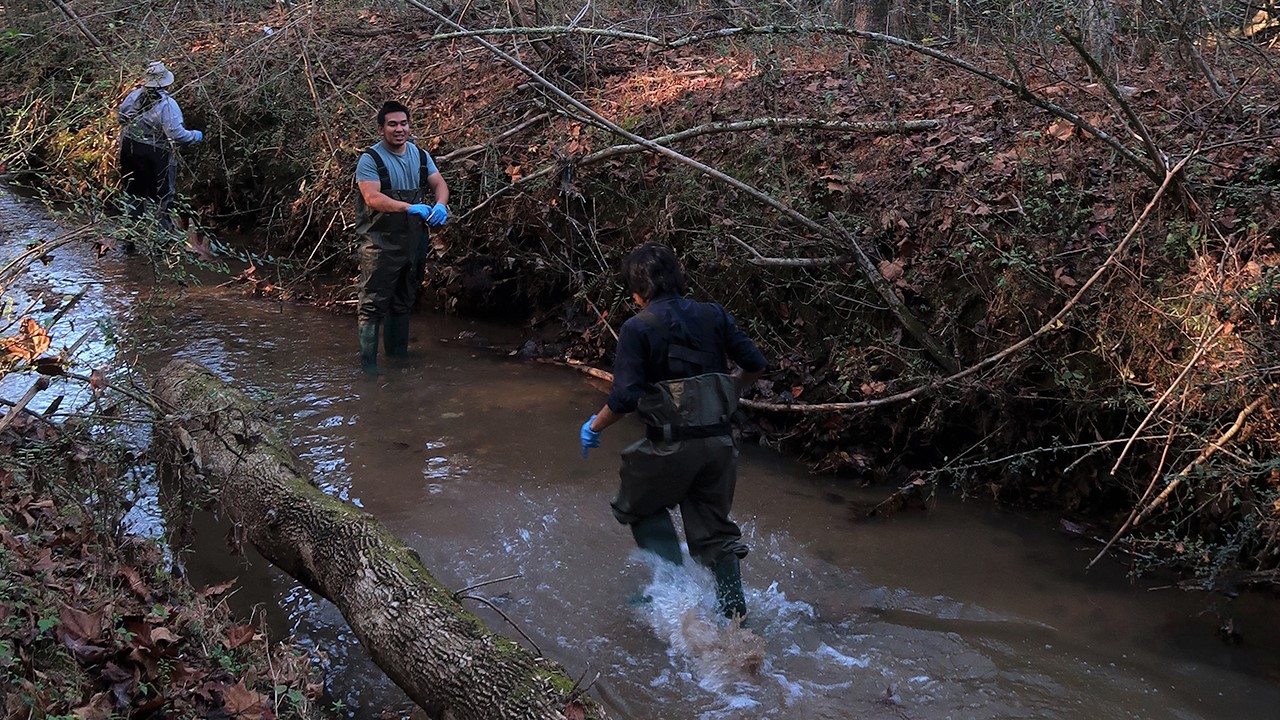Learning Assistant program introduces teaching as career pathway in physics

Article By: Staff
University of North Georgia (UNG) senior Christine Slotkoff knows how it feels to struggle with basic concepts in her chosen major of physics.
"When I first started, I wasn't the best at it," the 26-year-old from Clarkesville, Georgia, said.
Once she mastered the concepts, she wanted to help others who struggled, too. Therefore, Slotkoff enrolled in the physics department's Learning Assistant (LA) program that launched in spring 2019 and had an epiphany.
"I realized that I was able to help students as an LA," she said. "And I realized that I can help more students as a high school physics teacher."
Introducing education as a career path is the goal of the LA program, said Dr. Sarah Formica, professor of physics at UNG. Formica said accomplishing this premise will help to close the gap in high school physics education.
"Currently, less than half of high school physics teachers have a degree in physics," Formica said.
Of the 43,200 physics classes taught from 2007-08, about 46% were taught by an educator who majored in physics, according to a statistical analysis report from the National Center for Education Statistics.
More than a decade later, the problem has worsened. Of the approximately 3,100 teachers who are new to teaching physics each year, only about 1,100, or 35%, have a degree in physics or physics education, according to the American Institute of Physics. The American Association for Employment in Education Inc. also reported school districts consistently rank physics as the highest need area among all academic disciplines with regard to teacher shortages.
"Nationally, we need 700 new high school physics teacher now," Formica said. "If every undergraduate physics program graduates one more student who becomes a high school physics teacher, we'd meet that."
On average, about 15-20 UNG students graduate with a degree in physics each year. Formica said some of them will pursue advanced degrees while others will choose to pursue physics-related fields such as computer science, aerospace, technology and engineering.
"Through this program, we want to provide a pathway for our students to choose teaching," she said.
In the program, LAs train one-on-one with a professor for a lecture or lab class. Then, along with the professor, they help other students in those specific courses during class. During the first semester as an LA, students also take a pedagogy class to learn how to teach.
"Students are trained in teaching and pedagogy," Formica said. "The weekly pedagogy class presents LAs with evidence-based teaching methods, which help to improve experiences between the LAs and the students they are teaching."
Knox Abney, a senior pursuing a degree in physics, found the pedagogy course interesting and helpful.
"I haven't had any education courses so it was nice to have this course dedicated to science education," the 24-year-old from Lawrenceville, Georgia, said.
Abney said being an LA provides him with a behind-the-scenes look at how professors prepare and plan for lectures and labs. He also has helped his fellow UNG students learn the curriculum, which solidified his decision to teach physics.
"I always thought I would be a teacher, but I wasn't certain," Abney said. "But when I sit down with these kids and hear them say 'Oh! I get it now.' I get an amazing feeling."
That feeling appears to be spreading. In the spring, 20 students pursuing physics degrees registered for the LA program. Fifteen continued as LAs in fall 2019 while three others graduated. Joining them are 14 new students for a total of 29. But the newest additions are pursuing degrees in astronomy, engineering and chemistry.
Slotkoff applauds their decision.
"I just want every person for every major to consider being an LA," she said. "Even when you don't want to be teacher, you will learn so much about yourself."



